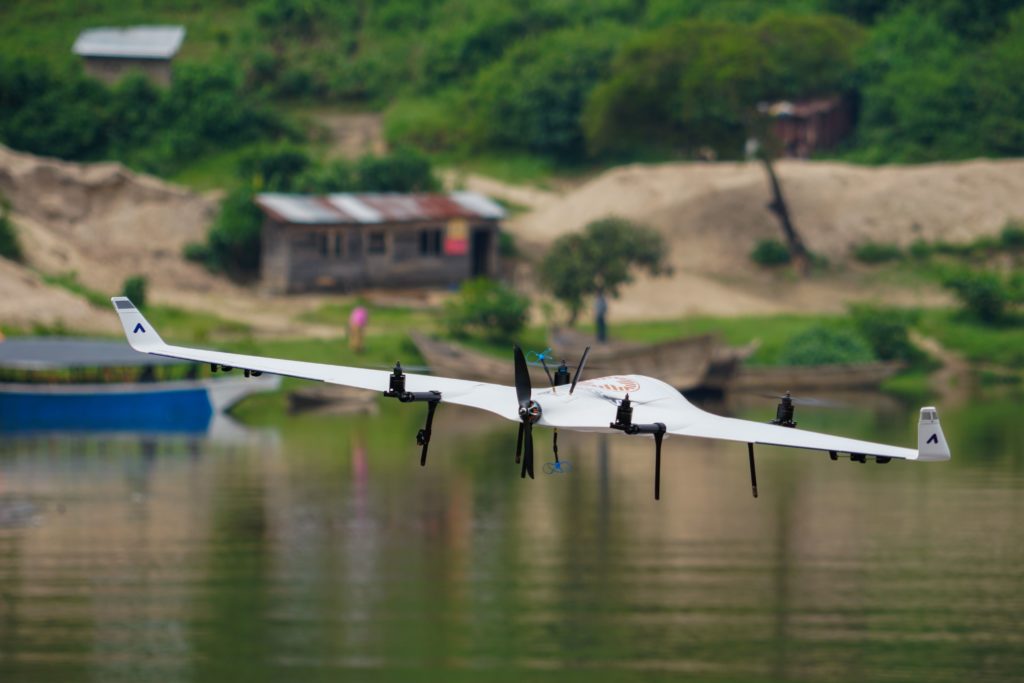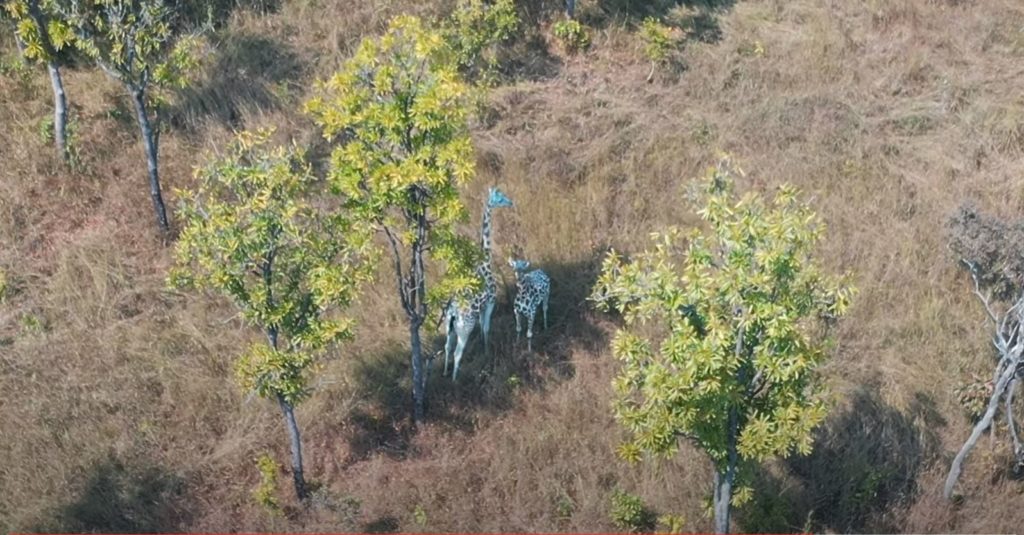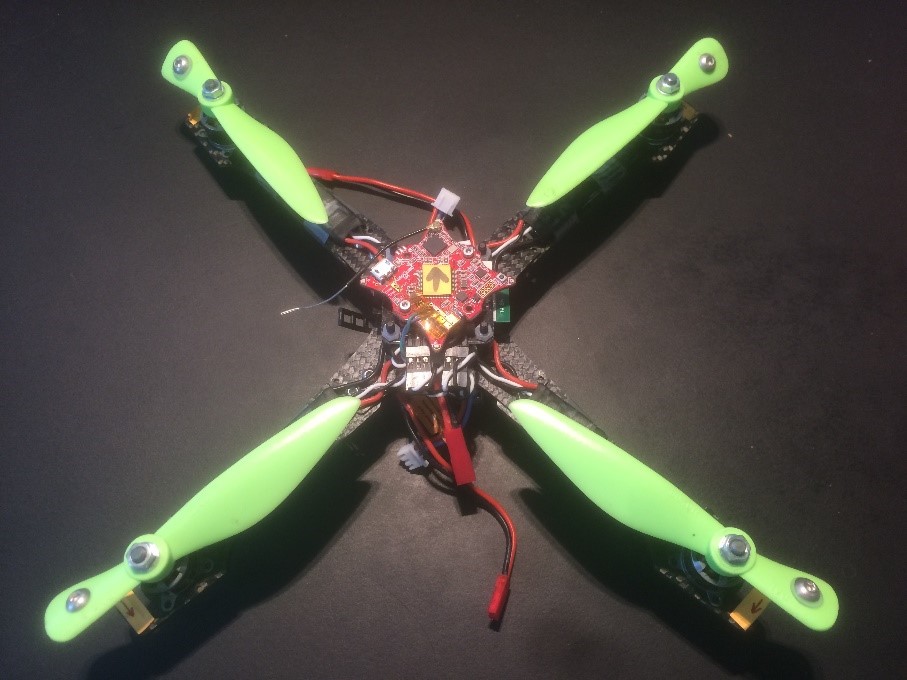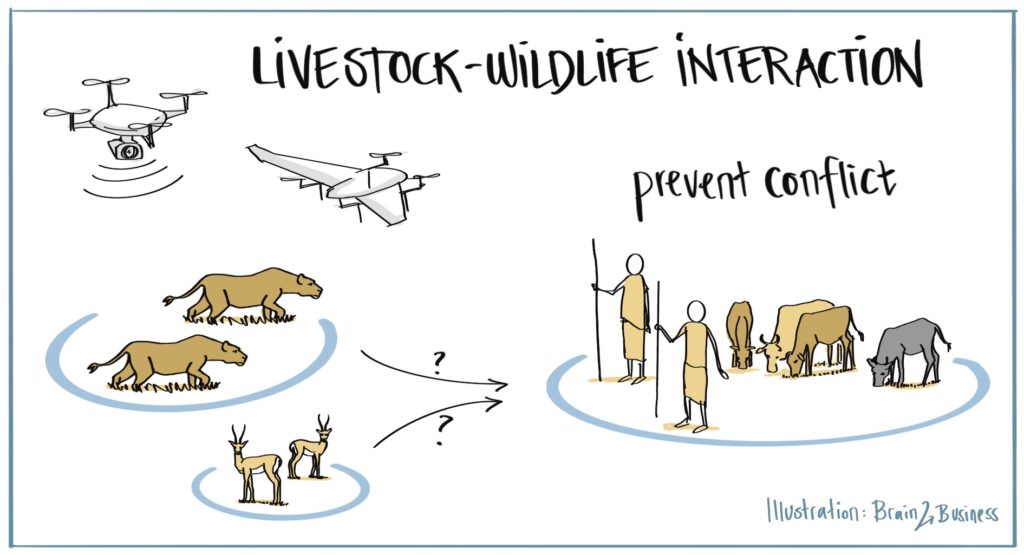Calm Drones
VTOL Drone Noise Profile Optimization for its Impact on Animal Behaviour
State of the Art
Many species exhibit behavioural or physiological reactions to drones. Such reactions can negatively impact animal welfare and bias scientific results; it is therefore crucial that disturbances be minimized. For most species, the disturbance is caused by the sound produced by the drones. The hearing range and sensitivity of animals varies by species and differs from that of humans. Attempts to develop a “silent” drone have been pursued; however, silent drones would reduce operational transparency and could support spying and other forms of misuse, which are undesirable in civilian and nature conservation contexts.
Innovations and Impact
Drones with sound profiles and flight paths that support both non-interference with animal behaviours as well as transparency of operation are novel and ethically relevant. They will allow for high-quality observations of animals in-situ, and actively reduces risks of drone misuse. This will be accomplished by modifying the propellers and other elements of the drone’s power system while taking advantage of the differing hearing characteristics of the species to be observed and of humans.

Copyright by Avy

Copyright by University of Bristol

Copyright by SDU
Objectives
Characterization of objective (i.e., loudness, frequency, harmonics) and subjective/psychoacoustic interpretation (i.e., annoyance, behaviour change) resulting from noise of relevant drones on humans and animal species of interest. Acoustic tests will characterise the noise signature of various drone configurations at different operating conditions. The tests will be performed in the National Aeroacoustics Facility at the University of Bristol. The energy-frequency content and directivity of each drone system will be fully investigated and compared against available audiograms for wildlife species. DC5 will make use or develop a range of bespoke noise mitigation methods to reduce or alter the noise signature of the drone. This will include changes to the propeller size, number and type of blades, blade tip and trailing edge shapes, use of absorbing or reflective surfaces, etc. DC5 will conduct drone exposure experiments with captive animals to assess their ability to detect novel drone systems and their strength of responses.
Expected Results
Innovations in the design of drone propellers and power systems which minimize interference with animal behaviours but still provide transparency of operation to humans. A database of drone noise profiles, guidelines for designing drones for calmness, and a testing standard for flying drones near animals. The project will also develop and examine a range of bespoke passive or semi-active noise mitigation methods, depending on the hearing range and sensitivity of the species of interest, to reduce or alter the noise signature of the drones and will test these through experimental exposure of drone systems to captive animals.
Project Facts
AVY BV (NL).
The Ph.D. will be awarded by University of Southern Denmark (DK).
Head of Tech Matthijs Damen, AVY.
Professor Ulrik Pagh Schultz Lundquist and Associate Professor Dylan Cawthorne, University of Southern Denmark (DK).
University of Southern Denmark (DK): Initial methodology and experiments.
University of Bristol (UK): Anechoic wind tunnel experiments and captive animals’ assessment with BZS.
Get in touch
Contact us on WildDrone@sdu.dk



WildDrone is an MSCA Doctoral Network funded by the European Union’s Horizon Europe research and innovation funding programme under the Marie Skłodowska-Curie grant agreement no. 101071224. Views and opinions expressed are those of the author(s) only and do not necessarily reflect those of the European Union or the European Commission. Neither the EU nor the EC can be held responsible for them.

